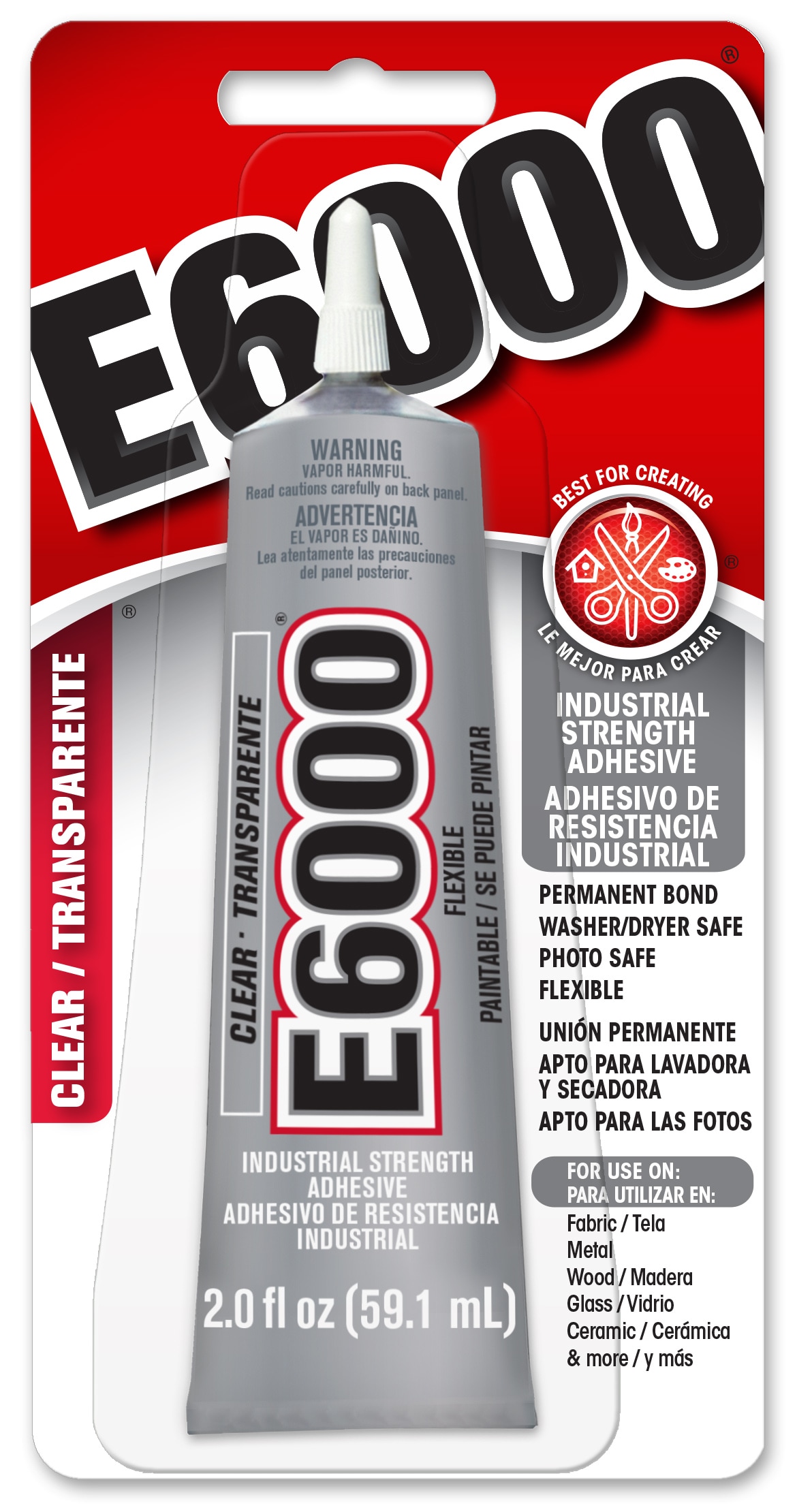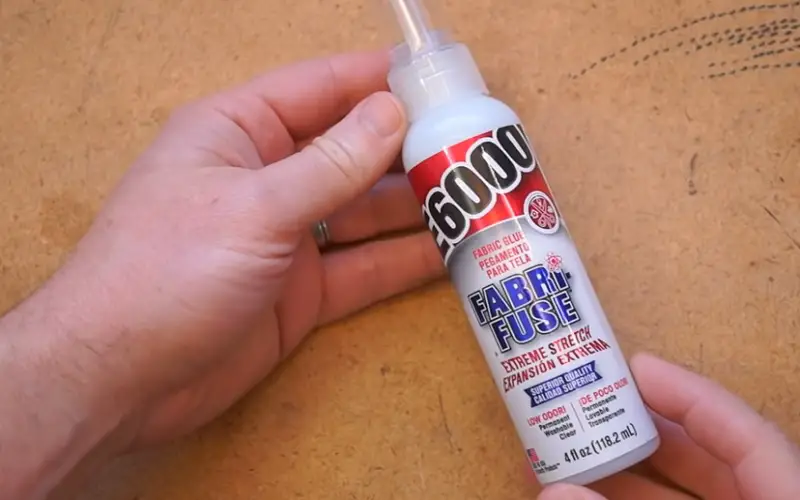E6000 and Contact Cement are both strong adhesives, but they have different characteristics and suitable applications. E6000 is a versatile adhesive known for its flexibility, and it is ideal for bonding a wide range of materials like glass, fabric, and plastic.
Contact Cement, on the other hand, is a fast-drying adhesive that creates a permanent bond quickly. It is commonly used for bonding wood, metal, and laminates.
Each adhesive has its advantages, so it is important to consider the specific needs of your project when choosing between E6000 and Contact Cement.
These two well-known adhesives, E6000 and Contact Cement, each have their own unique properties and applications. Before embarking on a project that requires a strong adhesive, it is important to understand the differences between these two popular options.
This article will provide a comprehensive comparison of E6000 and Contact Cement, outlining their features, uses, and the best scenarios for each adhesive.
By understanding the characteristics of these adhesives, you will be able to make an informed decision and ensure the success of your project. So, let’s dive in and explore the differences between E6000 and Contact Cement.
Contents
Strength And Flexibility
E6000 and Contact Cement are both popular adhesives known for their bonding strength and flexibility. When comparing these two options, it’s important to understand how their respective features contribute to their strength and flexibility.
E6000 Features
- Flexible Formula: E6000 is known for its flexibility, allowing it to withstand movement and vibration without losing its adhesive properties.
- Strong Bond: It creates a durable and long-lasting bond, making it suitable for a wide range of materials including wood, metal, glass, and fabric.
- Weather Resistant: E6000 is resistant to humidity, moisture, and extreme temperatures, making it ideal for both indoor and outdoor use.
- Clear and Paintable: The adhesive dries clear, allowing for seamless applications, and can be painted over for a polished finish.
- Diverse Applications: E6000 is versatile and can be used for various DIY projects, repair work, and arts and crafts.
Contact Cement Features
- Fast Setting: Contact cement offers quick adhesion, making it convenient for time-sensitive projects.
- High Bond Strength: It provides a strong and durable bond, particularly suitable for hard-to-bond materials such as decorative laminates, leather, and rubber.
- Heat Resistant: Contact cement can withstand high temperatures, making it a reliable choice for applications exposed to heat.
- Solvent-Based Formulation: This type of cement is formulated with solvents, making it important to use in a well-ventilated area.
- Specific Applications: Contact cement is commonly used in woodworking, construction, and automotive industries due to its high-strength bond.
Bonding Surfaces
When it comes to choosing the right adhesive for your projects, it’s essential to consider the bonding surfaces each product is suitable for.
The compatibility of the adhesive with different materials can significantly impact the strength and durability of the bond.
In this section, we’ll explore the bonding surfaces for E6000 and Contact Cement to help you make an informed decision for your specific needs.
E6000 Suitable Surfaces
E6000 is renowned for its versatility and its ability to bond various materials with exceptional strength. The following surfaces are well-suited for bonding with E6000 adhesive:
- Metal
- Wood
- Glass
- Ceramics
- Fabric
- Plastic
Contact Cement Suitable Surfaces
Contact Cement is particularly effective for specific materials and surfaces. It’s recommended for bonding the following surfaces:
- Laminates
- Leather
- Rubber
- Foam
- Tile
- Metal
Drying Time And Curing Process
E6000 and Contact Cement differ in their Drying Time and Curing Process.
E6000 Drying And Curing
E6000 has a longer drying time of 24 hours before curing fully.
Contact Cement Drying And Curing
Contact Cement dries quickly within 15-20 minutes but full curing can take 24-72 hours.

Water Resistance And Outdoor Use
E6000 and Contact Cement, both offer water resistance, making them ideal for outdoor use.
E6000 is known for its durable and strong bond, while Contact Cement provides a quick and strong hold for outdoor projects.
Both adhesives are reliable choices for outdoor applications due to their water-resistant properties.
E6000 Performance
E6000 is known for its exceptional water resistance and suitability for outdoor use. Its waterproof formula makes it an ideal choice for projects that require long-term durability, even in wet or humid environments.
Whether you’re working on an outdoor sculpture, repairing a broken garden ornament, or creating weather-resistant jewelry, E6000 is designed to withstand the elements.
Contact Cement Performance
Contact cement, on the other hand, may not offer the same level of water resistance as E6000. While it is a strong adhesive that bonds quickly and effectively, it may not be the best option for projects that will be exposed to water or outdoor conditions.
Contact cement is more commonly used for indoor applications such as attaching laminates or veneers to furniture or crafting small household items. In terms of water resistance and outdoor use, E6000 outperforms contact cement.
Its superior waterproof formula ensures that your projects will remain intact, even when exposed to rain, snow, or other environmental elements. This makes E6000 the go-to adhesive for any outdoor or water-related project where reliability is key.
When comparing the two adhesives, it is important to consider the specific requirements of your project. E6000 is an excellent choice if you need a strong bond that can withstand water exposure and outdoor conditions.
Contact cement, on the other hand, is more suitable for indoor applications where water resistance is not a primary concern. In conclusion, if you’re looking for an adhesive that offers exceptional water resistance and is suitable for outdoor use, E6000 is the clear winner.
Its waterproof formula and long-lasting durability make it the go-to adhesive for projects that require reliability in wet or outdoor environments. Whether you’re a professional craftsman or a DIY enthusiast, E6000 is a reliable adhesive that will ensure your projects withstand the test of time.
Toxicity And Safety
When it comes to choosing the right adhesive for your project, considering the toxicity and safety aspects is crucial. Both E6000 and Contact Cement are popular choices in the crafting and construction industries due to their strong bonding capabilities.
However, it’s important to take a closer look at their individual safety considerations before making your decision. In this section, we’ll explore the toxicity and safety aspects of E6000 and Contact Cement.
E6000 Safety Considerations
E6000 is renowned for its versatility, making it a go-to adhesive for various applications. While it offers excellent bonding results, it’s essential to understand the potential safety hazards associated with it.
- Flammability: E6000 is highly flammable and should be used with caution. It is crucial to keep it away from open flames and sparks.
- Ventilation: The adhesive emits volatile organic compounds (VOCs) during application and curing. Adequate ventilation is necessary to reduce exposure to these fumes. It is recommended to use E6000 in a well-ventilated area or with the help of a fume hood.
- Skin Contact: E6000 contains chemicals that may cause irritation or allergic reactions upon prolonged or repeated skin contact. It’s advisable to wear protective gloves and avoid direct contact with the adhesive.
- Eye Contact: Accidental contact with the eyes can be harmful. In case of contact, rinse the eyes thoroughly with water and seek medical attention if irritation persists.
Contact Cement Safety Considerations
Contact Cement, another widely used adhesive, also comes with its own safety considerations that users should be aware of.
- Flammability: Contact Cement is highly flammable, necessitating caution during use. It should be kept away from open flames, sparks, or other sources of ignition.
- Ventilation: Similar to E6000, Contact Cement releases VOCs and should be used in a well-ventilated area or with adequate respiratory protection.
- Skin Contact: This adhesive can cause skin irritation or allergic reactions, especially in individuals with pre-existing sensitivities. It’s advisable to wear protective gloves and avoid prolonged contact.
- Eye Contact: Contact with the eyes can result in severe irritation or damage. If accidental eye contact occurs, rinse the eyes immediately with water and seek medical attention.

Cost Efficiency
E6000 offers cost efficiency due to its versatility and long-lasting bond, making it suitable for various materials including glass, metal, and fabric.
On the other hand, while Contact Cement is affordable, it may require more frequent reapplication, potentially increasing long-term costs.
Frequently Asked Questions Of E6000 Vs Contact Cement
What Will E6000 Not Stick To?
E6000 will not stick to surfaces such as polyethylene, polypropylene, Teflon, and silicone.
What Is E6000 Glue Good For?
E6000 glue is good for bonding materials like wood, metal, glass, fabric, and plastic.
It provides a strong and durable hold for various DIY and repair projects. The adhesive is versatile, weatherproof, and suitable for indoor and outdoor use.
What Is The Difference Between E6000 And B7000 Glue?
E6000 and b7000 glue are both strong adhesive products used for various crafts and repairs.
E6000 glue is known for its industrial strength, while b7000 glue is a multipurpose adhesive. The main difference lies in their specific applications and drying times.
Does E6000 Work On Cement?
Yes, E6000 adhesive works on cement surfaces, providing a strong and durable bond for various projects.
Conclusion
Both E6000 and contact cement have unique strengths for various projects. Understanding the differences can help you choose the right adhesive.
Whether you prioritize flexibility or quick drying, both options have their place in your toolkit. Experiment with both to find what works best for your needs.

